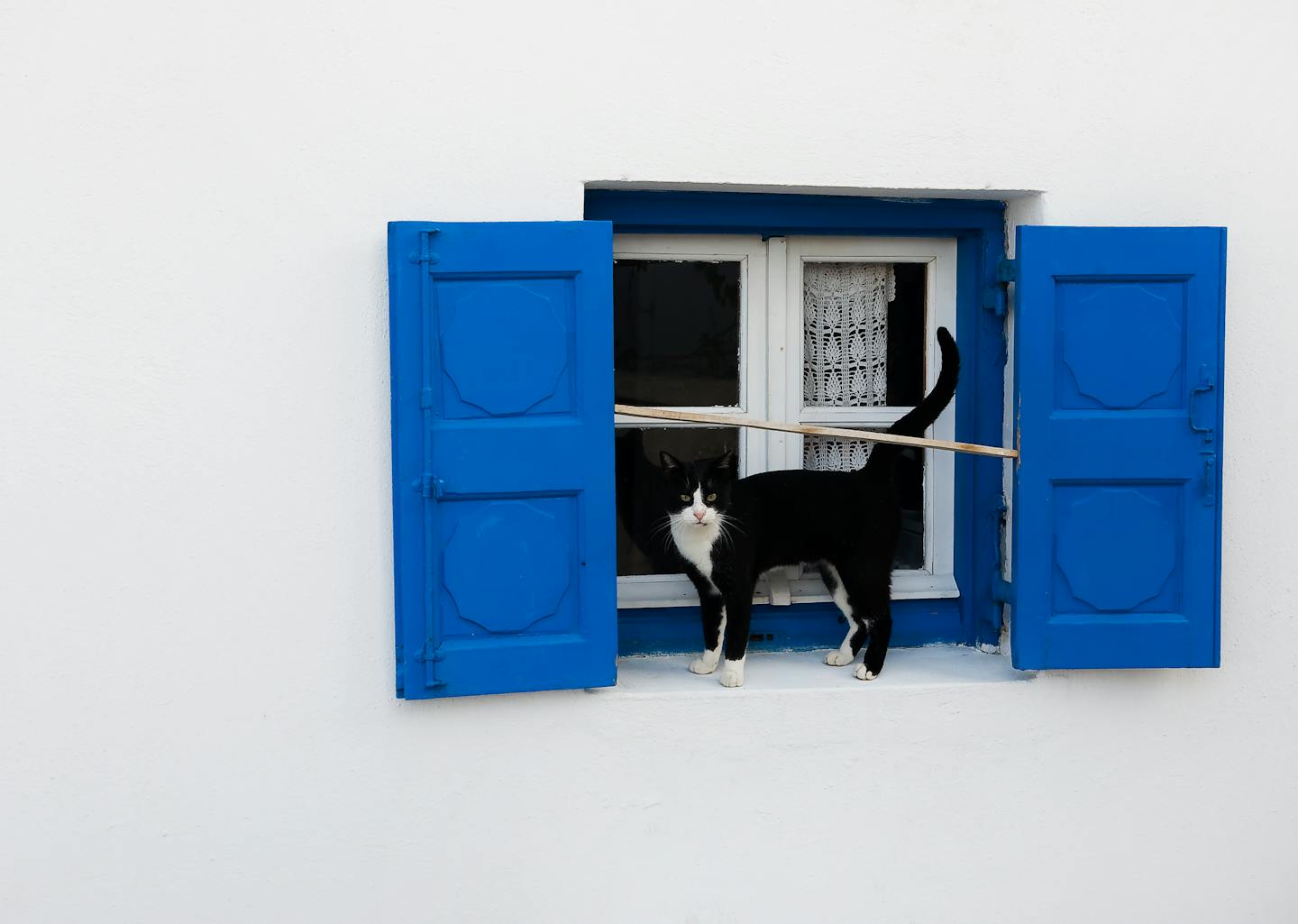
I recently returned from visiting family in America and was struck by how hot I felt back home in London, despite the temperatures being lower. Partly, this was down to humidity: London is sticky in summer, while Utah, where my uncle lives, is very dry.
But it’s also down to the buildings. My brick house absorbs and retains heat while every building I went to in America was either well ventilated or had air conditioning blasting away.
That contrast got me thinking: as the UK warms, can it keep its homes and workplaces comfortable without relying solely on air-con?
Jesus Lizana, Nicole Miranda and Radhika Khosla at the University of Oxford say that northern Europe is dangerously unprepared for the heat of the near future.
They looked at the coming demand for cooling using the concept of “cooling degree days”, which essentially assesses how often people will need to take extra measures, like switching the air-conditioning on, to keep themselves cool.
They found countries like Nigeria and Chad will see the biggest absolute rise in cooling degree days. “A clear indication that Africa is shouldering the burden of a problem it did not create”, they note.
But they also found that countries in northern latitudes will face the greatest relative increase in uncomfortably hot days.
“Of the top ten countries with the most significant relative change in cooling degree days as global warming exceeds 1.5°C and reaches 2°C, eight are located in northern Europe.”
It gets worse. “Buildings in the northern hemisphere”, they write, “are primarily designed to withstand cold seasons by maximising solar gains and minimising ventilation – like greenhouses.”
The solution seems obvious: let’s all get air-con.
Coal-powered air-con?
But Mehri Khosravi says it isn’t that simple. An energy researcher at the University of East London, she warns that:
“Cooling requires huge amounts of energy at the exact moments when demand is already high. In 2022 and 2023, the UK had to briefly restart a coal power plant to keep the lights – and the air conditioners – on.”
Khosravi says the UK and similar countries should instead focus on reducing demand for cooling.
In winter, she says, we rightly focus on better insulation to reduce heating demand, as “it’s a lot harder to warm a house than it is to stop heat escaping in the first place.”
So how do we stop a northern European brick house from heating up in the first place?
Khosravi suggests we look to southern Europe for inspiration, where 35°C summers were common long before climate change. Her suggestions include shading and shutters to block sunlight before it enters a building, natural ventilation to let heat escape in cooler hours, and reflective or light-coloured buildings that reflect sunlight.

It’s hard to imagine Scarborough being turned into Santorini any time soon. But while we wait to adapt our buildings for the new normal, Khosravi says we should adapt our behaviour too.
In Spain, the hottest hours are for siestas. Outdoor activities are paused, and people are more active in the mornings and evenings. Culturally, they understand that keeping curtains closed during the day and opening windows at night can prevent homes from overheating.
In the UK, heat is still culturally framed as “good weather”. Sunny weekends trigger beach trips, barbecues and more outdoor activity, even when it’s dangerously hot. This mismatch between perception and risk is a major public health challenge.
Read more: How Britain can beat the heat without becoming addicted to air conditioning
Smarter cooling
Perhaps there are smarter ways to cool down. Academics in Australia recently published research suggesting a “fan first” approach, even when air-conditioning is installed.
“The approach is simple”, they write: “use electric fans as your first cooling strategy, and only turn on air conditioning when the indoor temperature exceeds 27°C.”
These fans use only a tiny fraction of the electricity used to run air conditioning, but “can make you feel up to 4°C cooler”. In their research, the Australian team increased an office’s air conditioning set-point from 24 to 26.5°C, with supplementary air movement from desk and ceiling fans. This “reduced energy consumption by 32%, without compromising thermal comfort”.
Read more: Tempted to turn on the aircon? Science says use fans until it's 27°C
Air conditioning doesn’t have to mean the typical rows of humming white boxes. Heat pumps – already central to Britain’s low-carbon heating plans – can also keep homes cool in summer.
Essentially, they’re able to act like reversible air conditioners: in winter, they draw warmth into a building, and in summer they can run in reverse to push heat out.
Crucially, they do so with far greater efficiency than traditional systems. Theresa Pistochini, an engineer at UC Davis in California, points out that heat pumps can be “anywhere from 200% to 400% efficient”, meaning they move more than twice as much energy (heat) than the energy required to operate them.
Her analysis found that “buying a heat pump today will reduce global-warming impact in almost all geographical locations.”
Read more: Heat pumps will cool your home during the hottest of summers and reduce your global warming impact
For households, this could mean one appliance that covers both heating and cooling, slashes energy bills, and avoids the climate-damaging lock-in of conventional air conditioning. For policymakers, heat pumps may offer a way to meet surging cooling demand without blowing the carbon budget.
But heat pumps aren’t a perfect fix. Installation is costly, many older homes will still need upgrades, and there aren’t enough trained engineers. They’ll need further support if they’re to become a mainstream alternative to air-con.
Nonetheless, together with simple measures like fans and shutters, heat pumps point to a smarter approach to cooling. And it could be made even more sustainable if paired with clean energy from rooftop solar.
Homes equipped with solar panels can generate electricity during the hottest parts of the day – exactly when air conditioners or heat pumps are working hardest.
Tom Rogers and colleagues at Nottingham Trent University say solar will play a “pivotal role” in “addressing summer cooling demand and enhancing climate resilience”. They analysed satellite images to estimate that rooftop solar could provide “nearly one third” of the city’s electricity demand.
The UK is warming, and staying comfortable in hotter summers is a must. But there’s more than one way to cool down. Simple measures like fans, efficient heat pumps and rooftop solar – combined with smarter building design and passive cooling – could keep homes safe, energy use low and emissions in check.
This roundup of The Conversation’s climate coverage comes from our award-winning weekly climate action newsletter. Every Wednesday, The Conversation’s environment editor writes Imagine, a short email that goes a little deeper into just one climate issue. Join the 45,000+ readers who’ve subscribed.
![]()


 The Conversation
The Conversation
 Local News in Florida
Local News in Florida KLCC
KLCC Omak Okanogan County Chronicle
Omak Okanogan County Chronicle America News
America News Green Bay Press-Gazette
Green Bay Press-Gazette Associated Press US and World News Video
Associated Press US and World News Video Law & Crime
Law & Crime 5 On Your Side Sports
5 On Your Side Sports New York Daily News Snyde
New York Daily News Snyde Sweetwater Now
Sweetwater Now